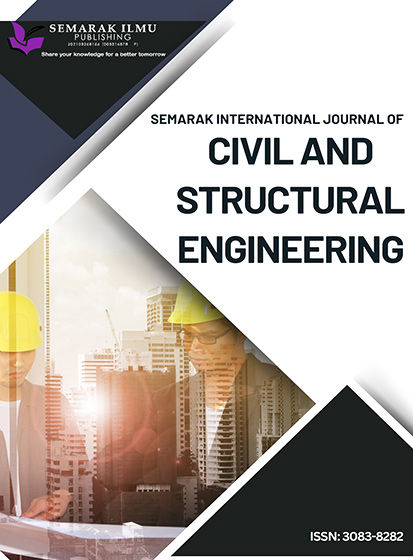Influence of Density and Compressive Strength on Intrinsic Air Permeability and Porosity of Hybrid Fibre-Reinforced Lightweight Foamed Concrete
DOI:
https://doi.org/10.37934/sijcse.4.1.3145Keywords:
Lightweight Foamed Concrete, Hybrid Fibres, Sealed Curing, Semi-StructuralAbstract
Given the growing demand for sustainable and environmentally friendly building materials, lightweight foamed concrete (LFC) is a suitable choice for semi-structural applications. However, the low strength and high water absorption of LFC make it an unsuitable material for large structures. The building industry does not consider LFC cost-effective unless it undergoes strengthening with other materials, as its mechanical strength and durability are insufficient for building use. This paper aims to augment the mechanical and durability characteristics of hybrid fibre-reinforced lightweight foamed concrete (HFRLFC) by using nylon and polypropylene (PP) fibres under a sealed curing condition. A strict experimental method was used to compare HFRLFC to control mixtures (which didn't have any fibres), single-fibre mixtures (0.4% nylon), and hybrid-fibre combinations (0.13% PP and 0.27% nylon) at a constant 1:1 mixing ratio. The findings demonstrated a notable initial improvement in mechanical strength and durability, as well as heightened resistance to lower permeability via less cracking and improved compaction. Mixed HFRLFC with 0.27% nylon and 0.13% PP had better mechanical and long-lasting properties than control mixes and LFC with only nylon fibre. HFRLWC exhibits the synergistic reinforcement mechanisms of hybrid fibres, improving their structural integrity and durability over time. These findings emphasize the potential of HFRLFC as a sustainable and effective material for semi-structural applications.













